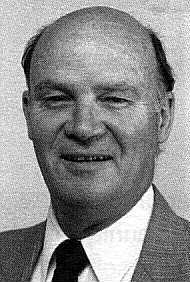
Under the auspices of the RCAF, Squadron Leader Trepanier and George Bury (rank forgotten) from RCAF Stn Rockcliffe, designated W. Bert Knowles, VE3QB, of Lanark, Ontario, as the leader.
Bert was a well known entity in the Ottawa Valley as he was the current QSL manager in 1948. He used to brag about starting the wood shed stove in wintertime, with unclaimed QSL cards.
Bert's home made rig was mounted on wooden shelves in the woodshed and frequently the mercury vapour rectifiers (866s) failed to ignite due to low temperature in winter.
Callsigns consisted of the Ottawa airbase call, CHT, followed by two
numbers.
CHT-20 was assigned to the base station which was a remotely
controlled AT-3 transmitter.
Bert was CHT21 and I was CHT22, located in North Bay. My ham pal across town, Paul Cutsey, VE3BCJ, was CHT23 and there were others whom I now forget.
The intention of the Air Force Amateur Radio System was to have in place an
emergency communication system that could be used by the government in
peacetime.
The value of such a network was realized from the experience
south of the border.
A special frequency assignment was obtained which permitted operation
outside the 75M band.
CW and AM phone, as well as MCW, was permitted
on 4.290Mhz.
For the flick mechanism of the 19 set this was
achievable,
plus
or minus a couple of kilohertz.
Message protocol was similar if not
identical to
RCAF message handling procedure.
During this time, the American amateurs had organized the Military Amateur Radio System or MARS as it was known. They were all over the spectrum.
The use of 4290Khz was strictly for practicing message procedure and net protocol and most arrangements were made via amateur radio on 75M phone.
On one or more occasion it was fun to use the MCW mode of the 19 set because this was no longer permitted on most of the HF bands, due to bandwidth required and the attendant interference that could be generated, even from the minuscule ouput of the 19 set.
One evening CHT23 and myself went on ragchewing on 4290 after the net. This was in MCW mode.
It was great fun to listen to the raucous note from the rig, especially from across town. It sounded like the Voice of America was being keyed.
About a week later, I had a frantic call from Bert, VE3QB, who with his
very
pronounced stutter, proceeded to berate me for being off frequency.
It
seems
an FCC monitoring station had intercepted our conversation and complained
to the RCAF.
This scared the pants off me, as any amateur knows from that era that an interference or regulatory breach in those days was considered pretty serious (compared to today!).
Sqdn Leader Trepanier and the rest of the Ottawa crew had a great laugh over this incident and stated that their reply to the FCC was to tell them to keep watch on the MARS infractions and not to worry about us.
I was quite relieved until orders went out that the 19 sets had to be crystal controlled on 4290 or an alternate netting system used.
I received in the mail, as did every other AFARS member, a regulation three-pronged crystal for 4290Khz, complete with oven for maintaining frequency very precisely.
It was never used and I kept it for at least five years before it was returned to Ottawa. (It had been signed out and to be returned under dire threats.)
Operation of 4290Khz was fun because there was no QRM to contend with and it was not uncommon to communicate with other provinces, CGQ for Halifax and Maritimes, CGR Vancouver and B.C. There was also a Winnipeg station but I forget the call.
This experience occurred while I was a teenager going to high school in North Bay and I often look back with fond memories at the opportunities the dear old 19 set gave me.
73
Ralph VE3BBM